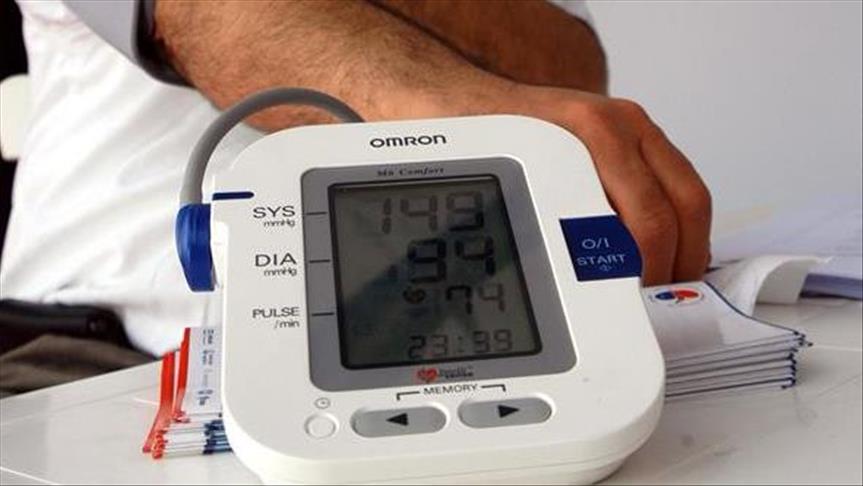 FILE PHOTO
FILE PHOTO
By Barry Eitel
SAN FRANCISCO
Almost half of all Americans have high blood pressure according to new guidelines, with cardiologists saying Tuesday it offers an opportunity to promote better health.
The American Heart Association (AHA) and the American College of Cardiology (ACC) redefined high blood pressure as a reading of 130 over 80. Guidelines published in 2003 said high blood pressure, or hypertension, was defined as a reading of 140 over 90, the top number being the systolic pressure reading and the bottom number being diastolic.
A blood pressure reading of 120 over 80 is still considered normal, with any systolic pressure reading up to 129 considered “elevated”.
Under the new guidelines, 46 percent of Americans now have hypertension compared to 32 percent under the former definition.
“Yes, we will label more people hypertensive and give more medication, but we will save lives and money by preventing more strokes, cardiovascular
“If you are going to put money into the healthcare system, it’s to everyone’s advantage if we treat and prevent on this side of it, in early treatment.”
Dr. Harlan Krumholz, a cardiologist at Yale University, said the committee drafting the new guidelines had to best summarize a wide range of data about blood pressure into general guidelines that could be communicated to patients.
“Because there remain many persistent gaps in our knowledge about how best to customize treatment, the guideline committee had to use their expert opinion to translate the trial results, and the conflicting trial results (many trials have not shown that lower is better) into general recommendations,” he told Anadolu Agency.
“Their conclusion was that for
Krumholz and Dr. David Maron, director of Preventive Cardiology at Stanford Health Care, both pointed out that the guidelines were largely based off a Systolic Blood Pressure Intervention Trial, or SPRINT trial. That study of 9,000 people was published in 2015 and rattled many previous assumptions about blood pressure.
“The guidelines needed to be updated to incorporate new clinical trial evidence,” said Maron.
Krumholz said the new definition will change how primary care doctors interact with their patients.
“I believe that we doctors have to work with our patients to individualize the goals of therapy based on people’s risks, their tolerance of medications, their preferences about taking medications – and the likelihood that they will benefit,” he continued.
“The truth is that we still have too many people with dangerously high levels of high blood pressure and they need to be our priority. For people with hypertension that we can get into the 140 range and who have a high risk of vascular events, we can engage in a conversation with patients about lowering their blood pressure further.”
For Americans with systolic pressure above 140 or diastolic pressure above 90, the AHA recommends doctors prescribe medication to keep
“For many patients, it will be a reasonable approach and they will tolerate the additional medications well,” Krumholz added. “For others, they may not be eager for more pills and prefer not to have more treatment. We need to be sure we are working together in partnership. And for all our patients, we can encourage healthy lifestyles, good diets and weight control as a good non-pharmacological means of reducing blood pressure.”
Maron agreed that promoting healthy lifestyles will be crucial for most patients, although for some, like those with cardiovascular diseases, diabetes or chronic kidney disease, medication is recommended.
“The guideline writing committee stated that only 1 in 5 of those newly diagnosed with hypertension will need medication,” he said. “The majority should be able to reach the goal of [less than] 130/80 through lifestyle changes.”
Anadolu Agency website contains only a portion of the news stories offered to subscribers in the AA News Broadcasting System (HAS), and in summarized form. Please contact us for subscription options.

